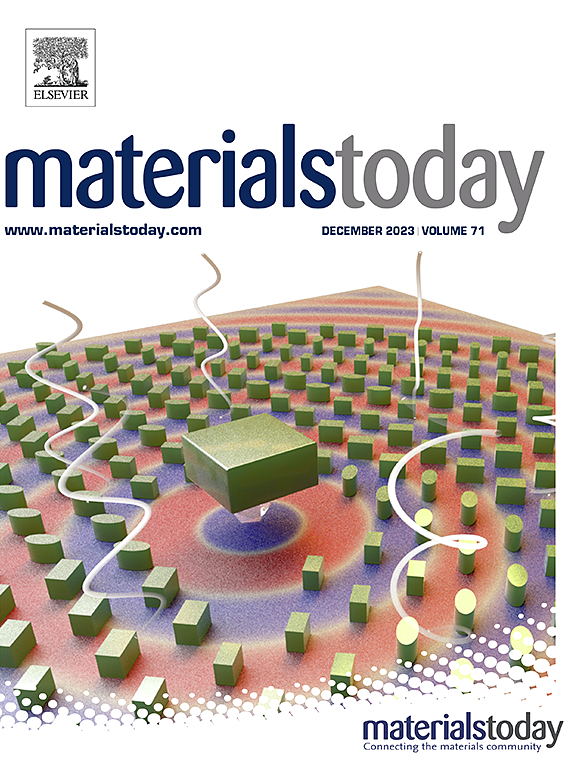Boosting ammonia electrosynthesis via interfacial tandem nitrate reduction enabled by an amorphous@crystalline electrocatalyst
IF 22
1区 材料科学
Q1 MATERIALS SCIENCE, MULTIDISCIPLINARY
引用次数: 0
Abstract
Electrocatalytic ammonia synthesis through the nitrate to ammonia (NRA) technique is of energy and environmental sustainability for the nitrogen cycle. Nevertheless, the nitrite (*NO2) intermediate may desorb, which would reduce the productivity of ammonia and the of Faradaic efficiency. Here, a heterostructured electrocatalyst consisting of amorphous CuO and crystalline CeO2 is prepared for efficient NH3 production through the interface tandem [2 + 6]-electron electrocatalysis approach. In alkaline medium, the NH3 yield and Faradaic efficiency reach 8.6 mg h−1 mgcat−1 and 96 %, respectively. As evidenced by the in situ experiments and theoretical calculations, the amorphous@crystalline interfacial local unsaturated Cu-Ce bimetallic site configuration endows the heterostructured electrocatalyst with strong *NO2 adsorption abilities and sufficient *H supply, which synergistically catalyze NH3 production through the [2 + 6]-electron NRA process. Furthermore, the Zn-NO3− battery devices, constructed with amorphous-CuO@crystalline-CeO2 as electrode materials, demonstrate outstanding application results. This work suggests an achievable route for promoting the NRA activity, enabling simultaneous ammonia production, electricity generation, and wastewater treatment, and holds great potential for the development of new heterostructured electrocatalysts for NH3 production.

amorphous@crystalline电催化剂通过界面串联硝酸还原促进氨电合成
硝酸制氨(NRA)电催化合成氨技术对氮循环具有能源和环境可持续性。然而,亚硝酸盐(*NO2)中间体可能解吸,从而降低氨的产率和法拉第效率。本文通过界面串联[2 + 6]-电子电催化方法制备了一种由无定形CuO和结晶CeO2组成的异质结构电催化剂,用于高效生产NH3。在碱性培养基中,NH3产率和法拉第效率分别达到8.6 mg h - 1 mgcat - 1和96%。原位实验和理论计算表明,amorphous@crystalline界面局部不饱和Cu-Ce双金属位构型使异质结构电催化剂具有较强的*NO2吸附能力和充足的*H供应,通过[2 + 6]-电子NRA过程协同催化NH3生成。此外,以amorphous-CuO@crystalline-CeO2为电极材料构建的Zn-NO3−电池器件显示出优异的应用效果。这项工作为促进NRA活性提供了一条可行的途径,使氨生产、发电和废水处理同时进行,并为开发新的异质结构氨生产电催化剂提供了巨大的潜力。
本文章由计算机程序翻译,如有差异,请以英文原文为准。
求助全文
约1分钟内获得全文
求助全文
来源期刊

Materials Today
工程技术-材料科学:综合
CiteScore
36.30
自引率
1.20%
发文量
237
审稿时长
23 days
期刊介绍:
Materials Today is the leading journal in the Materials Today family, focusing on the latest and most impactful work in the materials science community. With a reputation for excellence in news and reviews, the journal has now expanded its coverage to include original research and aims to be at the forefront of the field.
We welcome comprehensive articles, short communications, and review articles from established leaders in the rapidly evolving fields of materials science and related disciplines. We strive to provide authors with rigorous peer review, fast publication, and maximum exposure for their work. While we only accept the most significant manuscripts, our speedy evaluation process ensures that there are no unnecessary publication delays.
 求助内容:
求助内容: 应助结果提醒方式:
应助结果提醒方式:


